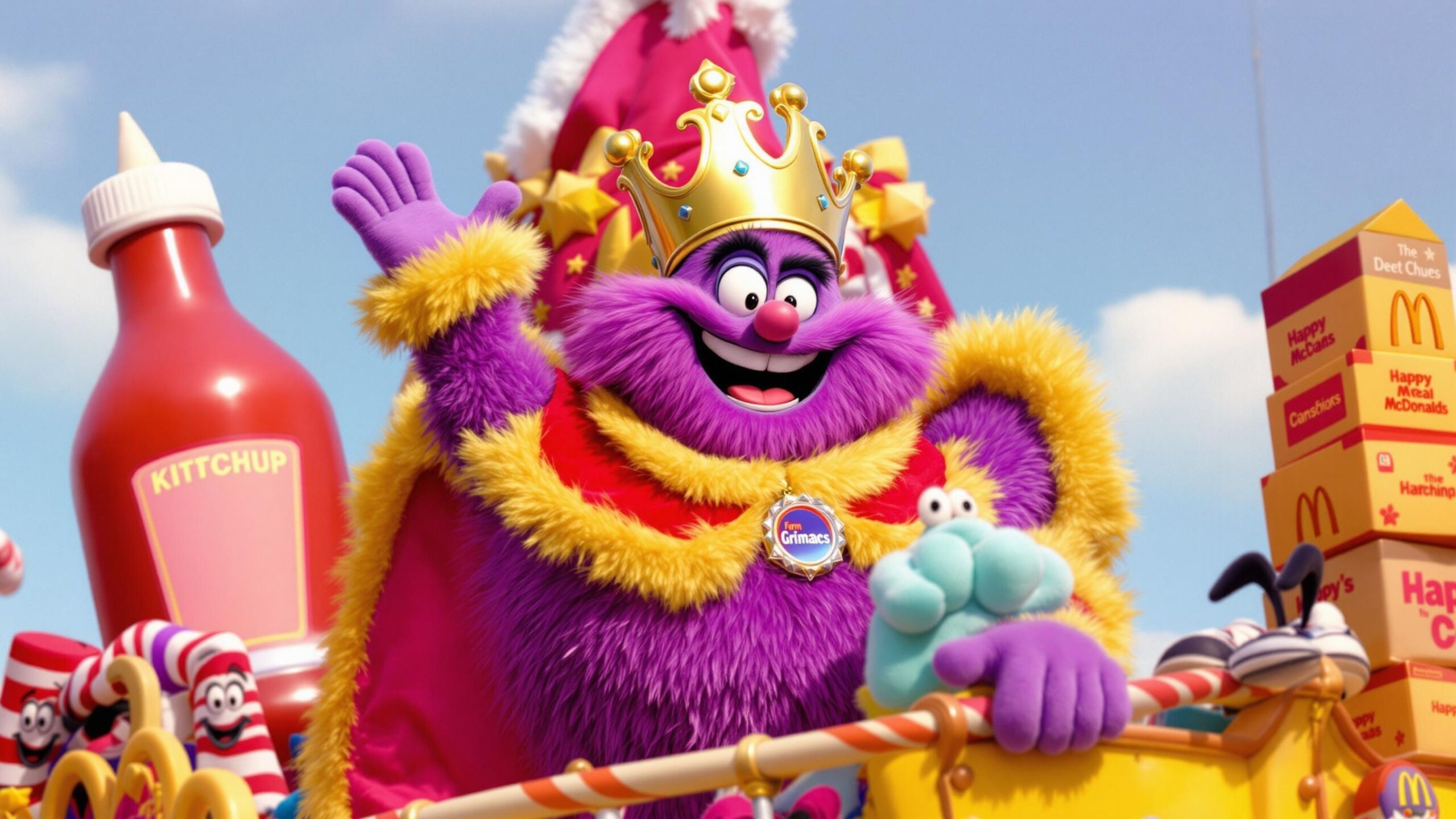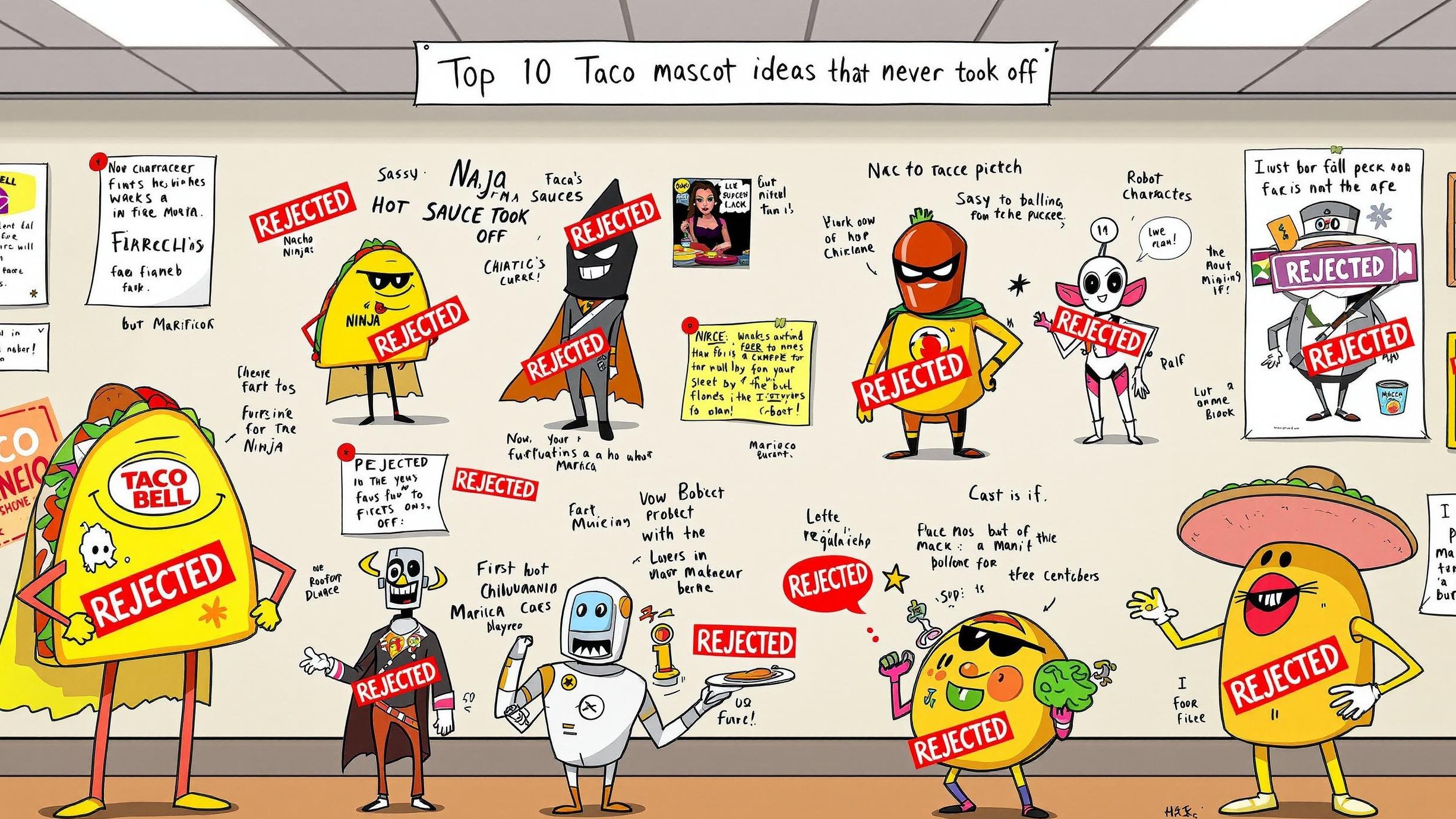Fast food mascots aren’t just cartoon characters or marketing gimmicks—they’re cultural touchstones. From television commercials to kids’ meal toys, these mascots have embedded themselves into our collective memory, representing more than just burgers and fries. They embody nostalgia, brand identity, and in some cases, controversy and reinvention. The following list dives into the top 10 most iconic fast food mascots of all time, unpacking their personalities, history, and surprising trivia that makes them unforgettable.
#1: Ronald McDonald
Ronald McDonald is arguably the most recognizable fast food mascot in the world. Introduced in 1963, Ronald was created as a way to appeal to children and build brand loyalty early. Clad in a yellow jumpsuit with red-and-white striped sleeves and socks, oversized red shoes, and a painted white face with a red wig and smile, Ronald became synonymous with McDonald’s itself. Willard Scott, a TV weatherman who also played Bozo the Clown, was the original Ronald. What’s fascinating is how the character evolved—from the slightly unsettling original version with a food tray hat to the cleaner, friendlier clown we know today. Ronald wasn’t just about food—he was part of a broader effort to brand McDonald’s as a family destination. Over time, Ronald became the face of Ronald McDonald House Charities, helping families with children in hospitals. Despite controversies and a shift away from marketing directly to kids, Ronald remains iconic. There was even a period in the 2010s where McDonald’s limited his public appearances due to fears around clowns becoming frightening to children, but he never fully left the scene. His catchphrase? “I’m lovin’ it,” of course—even though the line is technically from the jingle, Ronald’s smile sold it every time.
#2: The Burger King
Known for his oversized plastic head and eerie, silent demeanor, the Burger King character—often simply called “The King”—has gone through several versions since first appearing in the 1950s. However, the most memorable era was the mid-2000s, when Burger King rebranded him as a bizarre, meme-worthy figure who would silently show up in people’s homes or workplaces with a Whopper in hand. The surreal humor struck a chord with young adult audiences and led to some of the most viral commercials in fast food history. But before that, the King was more traditional—a jolly, animated ruler with a crown who endorsed kids’ meals. In many ways, the character is a parody of royalty with a greasy twist. His elaborate costume, exaggerated grin, and his role as a benevolent purveyor of flame-grilled burgers made him both weirdly lovable and hilariously unsettling. Despite being phased out again in the 2010s, he was briefly revived, proving just how embedded he is in pop culture.
#3: Colonel Sanders
Unlike many mascots, Colonel Sanders was a real person: Harland Sanders, a Kentucky entrepreneur who began selling his famous fried chicken in the 1930s. By the time KFC took off as a franchise, his likeness became the brand. The white suit, black string tie, and goatee weren’t costume—those were his actual clothes. After his death in 1980, his image lived on as a stylized mascot, with actors from Darrell Hammond to Reba McEntire (yes, really) taking up the role in ads. While some saw this rotating portrayal as tongue-in-cheek, others questioned if it honored or mocked the man behind the bucket. But there’s no denying his image is iconic—whether on signage, buckets of chicken, or parody ads. One lesser-known fact is that the Colonel was notoriously meticulous about quality; he once reportedly slapped a franchisee for deviating from his original recipe. In a sea of fictional characters, Colonel Sanders stands out as a real man turned mythic icon.
#4: Wendy from Wendy’s
Wendy is both a real person and a mascot—the daughter of Wendy’s founder Dave Thomas. Her full name is Melinda Lou “Wendy” Thomas-Morse, and the freckled, red-haired girl from the logo is based on her childhood image. Though Wendy herself has never been the face in live-action commercials, the character has symbolized wholesome, quality food since the chain began in 1969. The pigtails and blue-and-white gingham dress became instantly identifiable. In recent years, Wendy’s has gained a second life online through its savagely witty Twitter account, which transformed the brand into a social media darling. While Wendy might appear sweet, the online persona turned her into a sharp-tongued icon who roasts competitors like a boss. It’s this duality—classic innocence meets modern sass—that keeps her relevant today.
#5: Jack Box
Jack, the CEO mascot of Jack in the Box, stands out because he’s not a cartoon animal or personified food item—he’s a man with a giant, round, white head and a pointy yellow hat. Introduced in the 1990s after Jack in the Box needed an image reboot following a food safety crisis, Jack Box became the company’s satirical spokesperson. What made Jack unique was his corporate exec-meets-absurdist tone. He starred in campaigns poking fun at business culture, fast food competitors, and even his own brand’s missteps. There’s something oddly charming about a mascot that breaks the fourth wall, makes dad jokes, and runs board meetings. He’s the anti-mascot who makes fun of mascots, all while sporting a permanent smile. And let’s not forget: Jack once got hit by a bus in a commercial—and they turned that into a full story arc, complete with “Get Well Soon” campaigns.
#6: Grimace
Originally introduced as a villain with four arms who stole milkshakes, Grimace has undergone one of the most dramatic makeovers in mascot history. Today, he’s a lovable purple blob who exudes positivity and childlike wonder. He became part of the McDonaldland crew alongside Ronald McDonald, Hamburglar, and Birdie, serving as the innocent goofball of the group. Grimace doesn’t talk much, but when he does, it’s usually in a slow, gravelly voice that adds to his charm. His purpose in ads was to be a friendly, silly foil to Ronald’s cheeriness. What is Grimace, exactly? McDonald’s has never officially clarified, though employees once jokingly said he’s “the embodiment of a milkshake.” In 2023, a “Grimace Shake” promotion on TikTok unexpectedly went viral with surrealist videos, bringing the big purple guy back into the limelight in hilarious fashion.
#7: The Noid
Created in the 1980s by Domino’s Pizza, the Noid was a bizarre, red-suited gremlin whose sole mission was to “ruin your pizza.” With his buck teeth, floppy bunny-like ears, and black “N” emblazoned on his chest, the Noid was designed as a personification of everything that could go wrong with pizza delivery: cold slices, late orders, or messed-up toppings. Dominoes marketed itself as the hero that could “avoid the Noid,” promising quick, reliable service. Despite his status as an antagonist, the Noid became wildly popular and oddly beloved—thanks to memorable commercials, toys, and even a video game titled Yo! Noid for the NES. However, the character was retired in the 1990s after an unfortunate incident involving a man who believed the ads were targeting him personally. The Noid disappeared for decades, but Domino’s has recently brought him back in nostalgic campaigns, acknowledging his weirdness with a wink. He’s the rare villain mascot that fans root for just as much as the brand itself.
#8: Chuck E. Cheese
Chuck E. Cheese, the pizza-loving mouse and arcade host, is more than a mascot—he’s the face of an entire entertainment empire. First introduced in 1977 by Atari co-founder Nolan Bushnell, Chuck E. started off as a cigar-smoking rat before being redesigned into a friendlier mouse with a ballcap and purple T-shirt. He was the ringleader of a robotic band, “Munch’s Make Believe Band,” that played music while kids ran wild in the arcade. The company rebranded Chuck E. in the 2010s as a more modern CGI character who plays guitar and skateboarded, in hopes of appealing to a new generation of kids. The character’s personality also shifted from mysterious and slightly creepy to cool and energetic. Chuck E. became the mascot of birthday parties, and if you grew up in the ‘80s or ‘90s, odds are you still associate him with endless tokens and earworm jingles. From animatronic horror memes to TikTok nostalgia, Chuck E. remains an unexpected icon in the fast food world.
#9: Mayor McCheese
A staple of the McDonaldland universe, Mayor McCheese is one of the strangest—and most beloved—mascots from McDonald’s golden age of character marketing. With the head of a giant cheeseburger and the body of a cartoon politician in a sash and top hat, he ruled McDonaldland as its affable, bumbling mayor. Debuting in the early 1970s, Mayor McCheese was part of a colorful lineup created to compete with shows like H.R. Pufnstuf, and the similarities were strong enough that McDonald’s was actually sued over copyright infringement. Nonetheless, Mayor McCheese stood out with his mumbly voice, comically large burger head, and delightfully absurd design. He became a favorite on Happy Meal boxes, commercials, and playgrounds. Sadly, he was retired in the mid-1980s, but nostalgia for him has never faded. His legacy lives on in collectors’ items, vintage McDonald’s merchandise, and loving references in pop culture—most notably in Family Guy, where he appeared in a surreal courtroom sketch.
#10: The Taco Bell Chihuahua
In the late 1990s, a small dog with a big voice stole the fast food spotlight: the Taco Bell Chihuahua. Voiced by actor Carlos Alazraqui, this sassy, streetwise pup became a marketing phenomenon with his signature catchphrase, “¡Yo quiero Taco Bell!” The commercials were cheeky, often featuring the dog outsmarting humans or boldly declaring his love for tacos. The Chihuahua quickly became a pop culture icon—appearing on T-shirts, plush toys, and even Super Bowl ads. The campaign was so successful that it reportedly boosted Taco Bell’s sales by double digits. But not without controversy: some advocacy groups criticized the campaign for perpetuating Latino stereotypes, and by the early 2000s, the campaign was phased out. Nevertheless, the Taco Bell Chihuahua remains one of the most beloved and quoted mascots of all time. He brought attitude, charm, and a bilingual flair that left an indelible mark on advertising history.
From clown royalty to purple blobs and rebellious chihuahuas, fast food mascots have done more than sell burgers and fries—they’ve created worlds, inside jokes, and lasting impressions on generations of fans. These characters became avatars for the brands they represented, often surpassing the food itself in memorability. Whether they make us laugh, feel nostalgic, or just scratch our heads in amusement, the top fast food mascots have become a major part of pop culture’s visual language. And in an age of reboots, memes, and viral campaigns, their influence shows no signs o f slowing down. One thing’s for sure: when it comes to iconic characters, these mascots serve up a full meal of history, humor, and heart.



